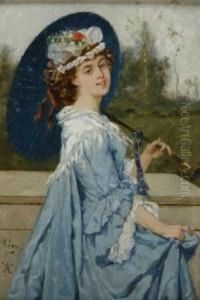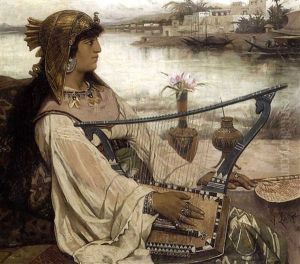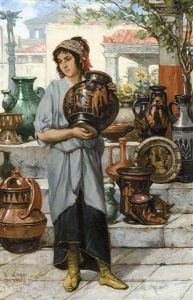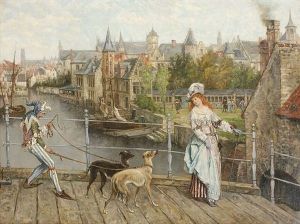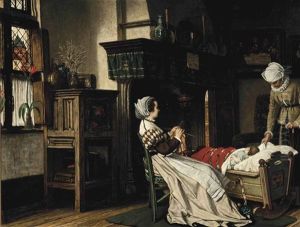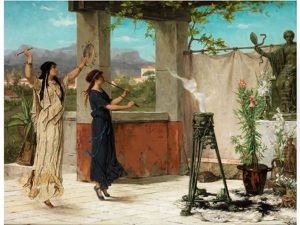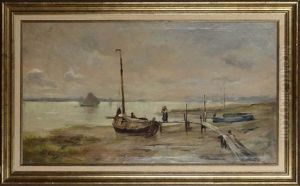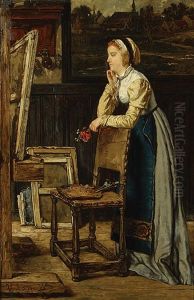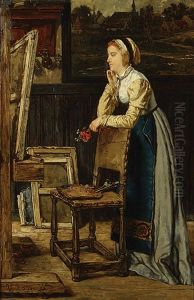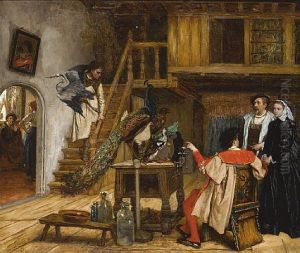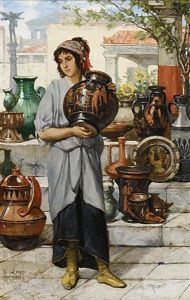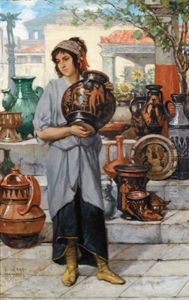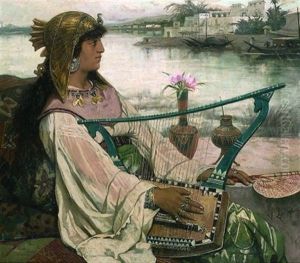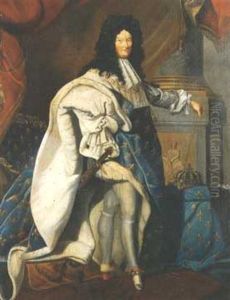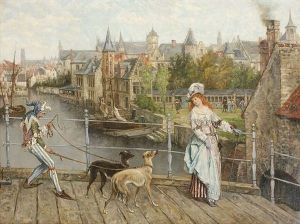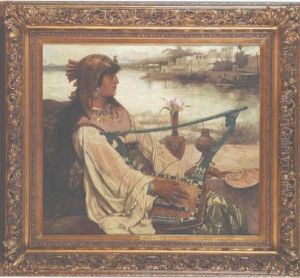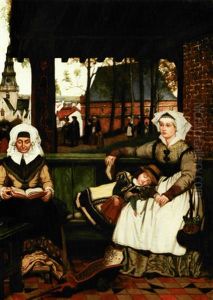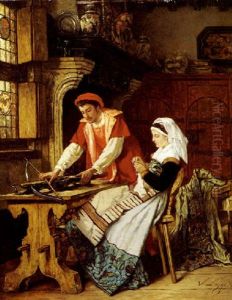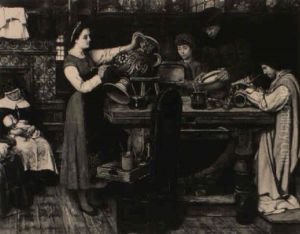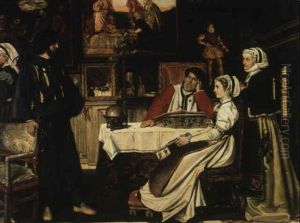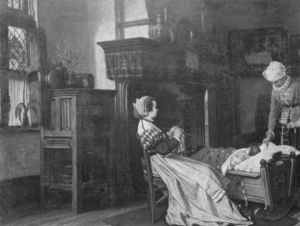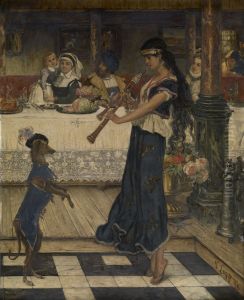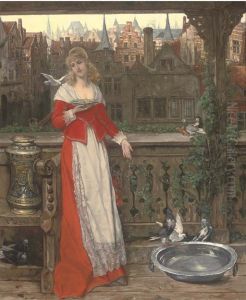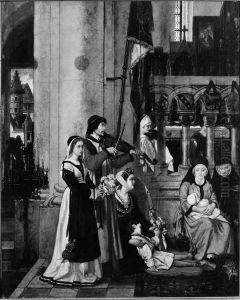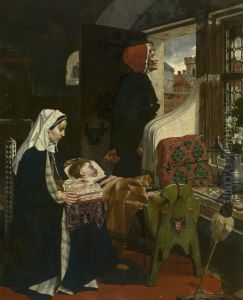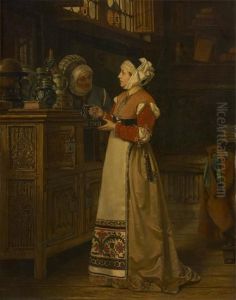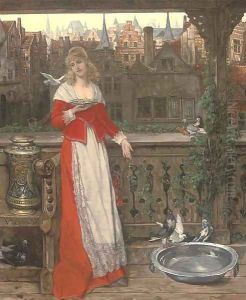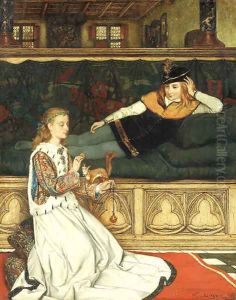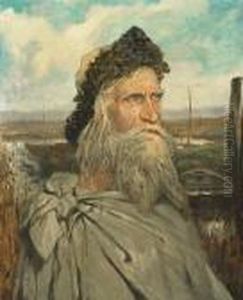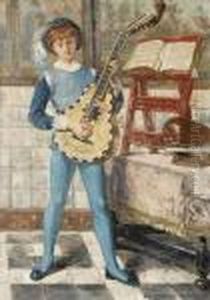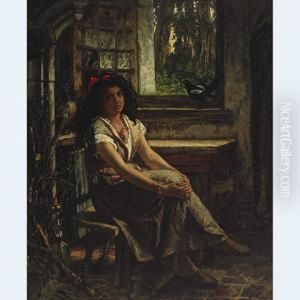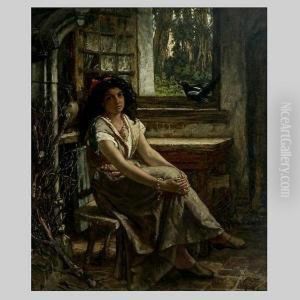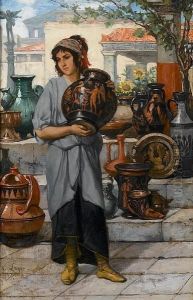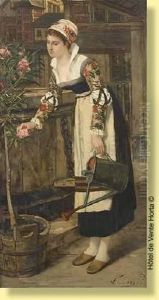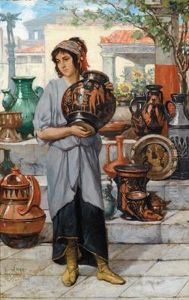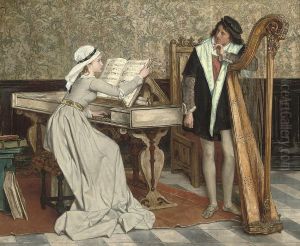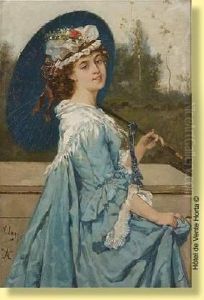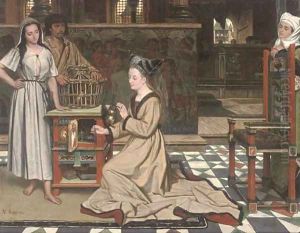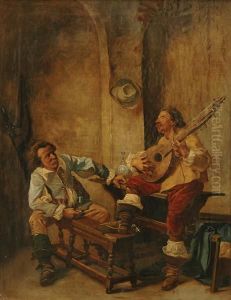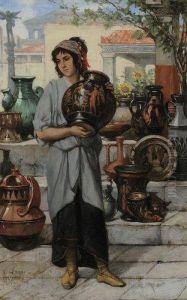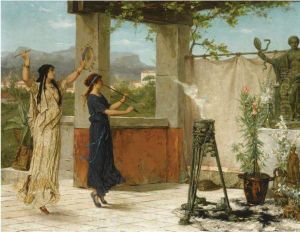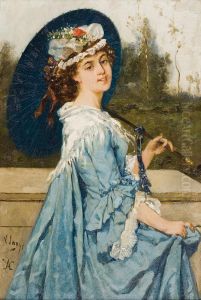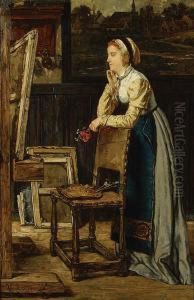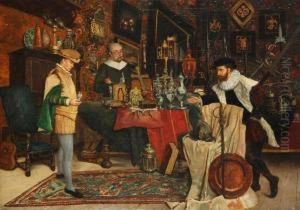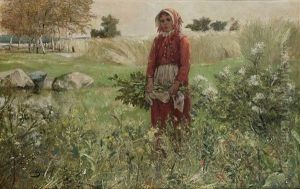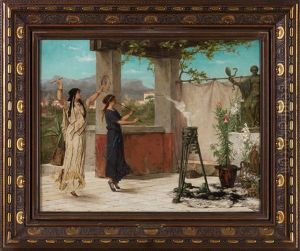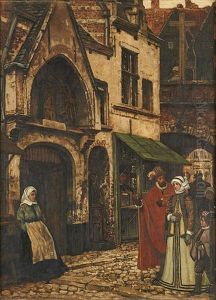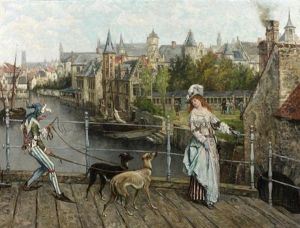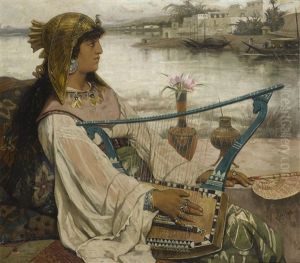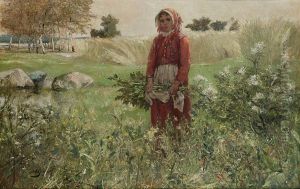Victor Lagye Paintings
Victor Lagye was a Belgian painter and decorator known for his historical and genre paintings. Born on December 13, 1825, in Antwerp, Belgium, Lagye trained at the Royal Academy of Fine Arts in Antwerp under the tutelage of Nicaise De Keyser, a prominent history painter.
Lagye’s artistic career was marked by his adherence to the academic tradition, with a strong focus on historical accuracy and classical themes. His works often featured dramatic scenes with meticulous attention to detail, reflecting the 19th-century academic art movement's values. In addition to historical paintings, Lagye was also recognized for his genre scenes which depicted everyday life with a sentimental or moralizing tone.
Throughout his career, Victor Lagye received various commissions for decorative works in public and private buildings, which included murals and ceiling paintings. This aspect of his work showcases his versatility and his ability to work on a grand scale. His decorative projects contributed to the embellishment of numerous prestigious interiors during his time.
Lagye’s influence extended beyond his paintings as he was also involved in teaching. He served as a professor at the Royal Academy of Fine Arts in Antwerp, where he had once been a student. Through his teaching, he influenced a generation of young artists, imparting the academic principles that he had honed throughout his career.
Victor Lagye's commitment to academic art was recognized by his peers and patrons. His works were exhibited in various salons and exhibitions, where he garnered respect and accolades. Despite the shift in artistic currents towards the end of the 19th century, with movements such as Impressionism challenging the academic norms, Lagye remained faithful to his style and approach until his death in Antwerp on February 24, 1896.
While Lagye may not be as widely known today as some of his contemporaries, his contributions to Belgian art, particularly within the sphere of academic painting, remain noteworthy. His legacy is preserved in the art collections of various museums, and his role as a teacher has had a lasting impact on the Belgian art scene.
